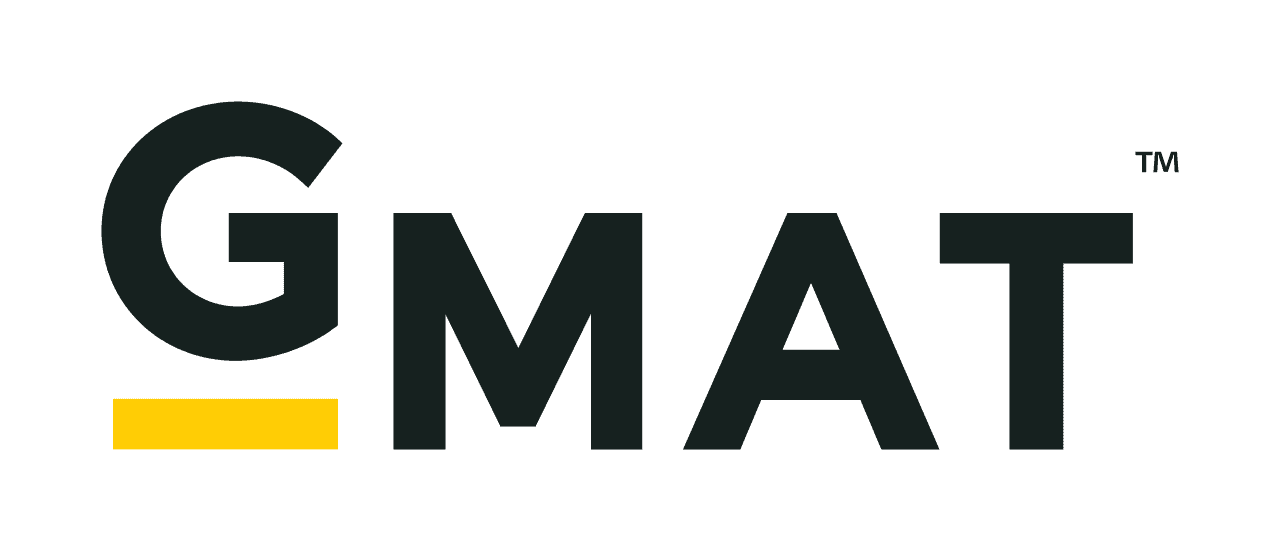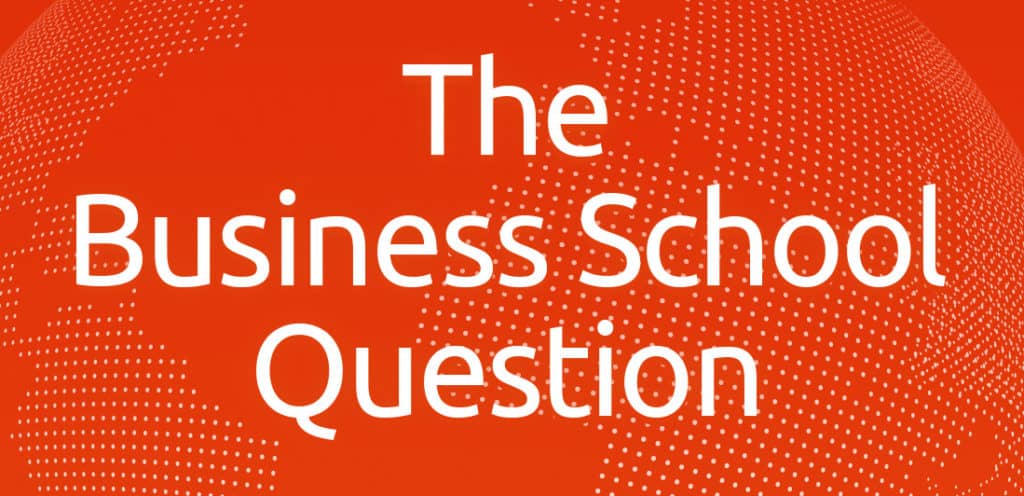Why do candidates take the GMAT? What are the main purposes of the GMAT? How is taking the GMAT a different experience than taking the LSAT or the GRE? This guide will explain the GMAT and the main uses of its scores to help you decide why taking the GMAT makes sense for the future of your education and career.
What is the GMAT is and why is it important?

First off, the GMAT is a sophisticated exam, but it also features a very learnable structure. Unlike most tests that students have been conditioned for after years of test-taking, the GMAT is not an exam one can study for by memorizing facts. One of the most critical factors in being well-prepared for the GMAT includes understanding the type of questions the student will be expected to answer and how problems in the exam are solved.
The Graduate Management Admission Test is a standardized exam most commonly used by graduate business schools to assess specific skills and abilities of prospective students for the purpose of determining their potential for academic success. Students planning on obtaining a Master of Business Administration or related degree will take the GMAT as part of their application process. Presently, over 6,000 business schools worldwide, including top-ranked online MBA programs, use the GMAT to inform their admission decisions about potential graduate students. Fortunately for those who don’t have the desire or time to take the exam, there is a significant amount of online MBA programs that do not feature the GMAT as an element of their admissions process.
The GMAT is offered year-round at a number of testing centers throughout the United States. Specific dates offered will vary by the testing center. GMAC lists a searchable database of approved testing centers for prospective students to find a location near them. Test centers administer the GMAT using individual computer workstations in testing rooms. Two sections, the Verbal and Quantitative, are known as adaptive exams. The exam’s integrated algorithm evaluates and processes each response and selects the next series of questions based on a student’s answers and subsequent skill level.
What is the history of the GMAT?

In 1953, leaders of nine of the top business schools in the nation including Harvard, Washington University in St. Louis, Columbia, Northwestern, the University of Pennsylvania, the University of Chicago, the University of Michigan, Rutgers, and Seton Hall, met with representatives from the Educational Testing Service. The purpose of these closed meetings was to create and develop a standardized admissions exam for graduate business degree programs.
The test’s goal was to improve the business school application process by adding transparency and accessibility by exposing testing skills necessary to business school success in a statistically uniform and reliable fashion. Harvard Business School began offering the MBA as a graduate business degree in 1908, but still lacked an exam for admission to its MBA program. The ETS and the nine business schools’ combined efforts resulted in the Admission Test for Graduate Study in Business.
Admission Test for Graduate Study in Business
The ATGSB was first administered to over 1,200 students in February of 1954. Nearly 2,900 applicants of ten business schools would take the test in its first year. The inaugural test sections were referred to as Verbal Omnibus, Quantitative Reasoning, Best Arguments, and Quantitative Reading. Verbal Omnibus included the components of antonyms, analogies, and sentence completion. Quantitative Reasoning dealt with data interpretation and problem-solving.
The ATGSB was revised several times over the first two decades of its existence, especially its verbal assessments. In 1955, the exam was divided into separately scored modules for verbal and quantitative skills. Antonyms and analogy questions, part of the Verbal Omnibus module, were removed from the test in 1961, reinstated for ten years beginning in 1966, and then wholly discontinued in 1976. Reading recall sections, in which test-takers had to answer questions about reading passages without the benefit of getting to revisit the text, were a feature of the ATGSB in the 1960s. Data sufficiency questions were added in 1961. These questions measured the ability to analyze quantitative problems.
The Graduate Business Admission Council, or GBAC, was formed in 1970 as a separate entity from ETS. GBAC’s original membership included 30 business schools. Practical business management questions were added to the test in 1972. The practical questions influenced test-takers to classify objective information contained in reading passages—these questions developed into critical reasoning questions in the late 1980s.
Graduate Management Admission Test
In 1976, the ATGSB became known as the Graduate Management Admission Test, or GMAT. That same year, GBAC became known as the Graduate Management Admission Council (GMAC). As for changes to the exam during the 1970s, reading comprehension replaced the reading recall questions in 1977, and the skills assessment has continued to the present day. The Analytical Writing Assessment became part of the GMAT in 1994. 1995 saw the addition of the first international member schools to GMAC. London Business School and INSEAD were the first of these types of schools. By this time in history, the GMAT had been taken by approximately 200,000 students over the first four decades of the test’s history.
GMAC initiated a number of programs during the 1980s and early 1990s, including a series of publications dealing with major issues in graduate business training, a low-cost financial aid program for MBA students, and the founding of the Minority Summer Institute. The establishment of the Minority Summer Institute intended to encourage underrepresented groups to pursue careers as post-secondary business educators.

The most significant improvement to the test in the mid-1990s was the introduction of computer-adaptive testing initiated in 1997. This advancement allowed the test to be provided much more widely than before and directly led to a dramatic increase in the overall number of test-takers. The GMAT is currently taken by approximately a quarter of a million potential graduate students each year at testing locations in over 110 countries. Five thousand two hundred programs at over 2,000 universities currently accept the GMAT.
GMAC broke away from the ETS in 2005, and Pearson VUE now oversees the test. The most noteworthy recent content adjustment to the GMAT was the introduction of an integrated reasoning section in 2012. The most recent GMAT also includes a shortened analytical writing assessment in which students are only required to complete one of the two writing tasks.
Remarkably, the 200-800 range of scoring has been upheld throughout the entirety of the GMAT’s being administered. A high degree of consistency within the GMAT’s assessment of quantitative skills has also remained consistent. Problem-solving questions have been included in the GMAT every year since 1954. The general focus on quantitative skills has remained relatively stable, as well. Many of the current GMAT’s security policies are traced back to a 2008 cheating scandal when a private entity stole and sold GMAT questions to online users.
How do students best prepare for the GMAT?
Upon deciding to take the GMAT exam, business school candidates are ready to showcase their most relevant skills and show business school leaders that they are serious about the rigors of a graduate business education. Pursuing a graduate degree is a demanding yet rewarding experience. Taking the GMAT exam is part of that vital process. There is much to learn from GMAT test-takers in the past. Some GMAT tutoring entities are now stacked with successful test takers who offer instruction and guidance for students.
Tips for the GMAT
Here are some of the best practices from previous students who have taken the GMAT exam.

The optimal time to begin preparing for the GMAT exam process is at least six months before test results are required. Most test takers have reported a minimum eight-week preparation timeline. Students who are somewhat familiar with the characteristics of the GMAT exam content find this time frame ideal. As study time is best directed by a student’s specific and unique needs, the test taker should be aware of his or her studying attributes and challenges. For optimal exposure and comprehension, students are encouraged to study and review one section of the test. This allows for the best potential understanding without section confusion.
Test takers will want to brush up on their basic math skills for the GMAT. Test questions may include concepts and types of problems that students have not been exposed to in years. There are a plethora of study guides, and free math helps that students can access online, which will help with the math problems included in the GMAT.

As the GMAT is a timed test, students will need to practice their pacing. Good time management is crucial to completing the GMAT exam successfully. The GMAT is offered as a three hour and seven-minute exam. This time frame includes two 30-minute sections, a 65-minute section, and a 62-minute section. Each module of the test is strictly timed, so students do not get any additional time unless they set up accommodations due to a documented disability. During the administration of the GMAT, test takers have the option of taking two eight-minute breaks.
Students can take each break after approximately an hour of testing. The first break comes after the Analytical Writing Assessment and Integrated Reasoning, and the second break follows the Quantitative section. Taking advantage of both eight-minute breaks means a total testing time of three hours and twenty-three minutes. Test takers choose the order of each section they complete, but the overall test length and spacing of the breaks are always consistent.
Free Resources for the GMAT
One excellent free resource that test-takers need to see as a must for their preparation process is the GMAT Official Practice Starter Kit that includes two exams. This stellar resource was designed to help students become familiar with the test’s format used and what types of questions are asked in the actual exam. Two computer-adaptive GMAT exams are included as parts of this resource as well. Best of all, access to the starter kit and tests is absolutely free.
Students wishing to go deeper into the preparation experience may also choose to purchase Practice Exams Three through Six on the website. The GMAT Official Guide includes a Verbal Review and Quantitative Review. Students can also target their preparation for a specific section of the test by using resources like GMAT Write AWA prep, GMAT Official IR Practice, and GMAT Official Quantitative Practice.
Another excellent resource available through MBA.com is the Interactive GMAT Exam Tutorial. This free resource was created to provide test-takers with a specific idea of what the test screens will look like while they take the GMAT exam. Tutorial features include a look-and-feel of actual GMAT test screens, a helpful review of screen layouts and navigation and layout, and information about the test’s structure. Resource users will also have access to information about key elements to expect at the test center and helpful tips and reminders for test day. While test-takers can access the online tutorial at any time, it is recommended that it be used within three days of the student’s taking the GMAT.
Excellent Books for GMAT Prep

It is no secret that published books generally cost money. While in some realms, printed resources that cost money to buy are seen as antiquated or too inconvenient to pursue. However, when preparing for the GMAT, prep books are a great idea for test-takers as they provide time-tested help for study. One of the most-recommended preparation practices for the GMAT is for test-takers to use a balance between free and paid preparation resources. Students on a tight budget may try to avoid resources they have to pay for, but GMAT prep is a critical investment at the end of the day. While paid-for resources are valuable in the long run, there are ways to save money by purchasing resources that offer the most bang for the academic buck.
Some of the best-printed resources available to test-takers include:
- Manhattan GMAT
- The Official Guide to the GMAT
- Nova’s GMAT math book
- PowerPrep GMAT
Manhattan’s Complete GMAT Strategy Guide Set consists of nearly 1,200 pages and offers six practice tests. This resource is priced at nearly $150 yet is one of the most trusted and reliable GMAT resources available today. GMAC’s The Official Guide to the GMAT Review’s 2020 edition features three books and over 1,700 questions. The $75 price tag and online question bank make this a great value. One of the most affordable printed GMAT resources comes from Nova. The GMAT Math Prep Course can be found for less than $30 and contains over 600 math questions.
Benefitting from GMAT Podcasts
Podcasts have become the next big thing in entertainment and education. While one out of four people listened to them fifteen years ago, today, over three out of four people in the United States consider podcasts a source for regular news gathering and entertainment. Current statistics reveal that each year 20 million new listeners tune into this form of media.
While books will continue to be published as they give readers a wealth of knowledge, podcasts do as well yet in a different way. The fact is that listeners can tune into podcasts while so many things happen in life like cooking, driving, cleaning, and much more. Insightful podcasts offer knowledge and entertainment for the listener. Here are some of the best GMAT podcasts that prepare students for the exam.
-The Touch MBA Admissions-

The Touch MBA Admissions is a podcast led by Darren Joe, a former MBA Admissions Director. In this podcast, Joe gives MBA applicants the inside scoop on crafting an attractive application for top-ranked schools. Throughout the Touch MBA Admissions, he chats with admissions directors and students from around the world as they talk about their experiences and offer advice about getting into top MBA colleges.
-The Business School Question-

Business school aspirants looking to get into one of the top Business Schools around the world need to note The Business School Question. This stellar podcast features interviews with business school experts who answer listeners’ admissions questions and offer advice for crafting well-constructed business school applications.
What are the major trends of the GMAT?
2018-2019

The global candidate center of gravity is shifting east. Since its inception, more United States residents have taken the GMAT exam than anywhere else in the world. The East, particularly East and Southeast Asia, has now become the most dynamic GMAT exam-taking center. East and Southeast Asia accounted for over 35% of all exams taken in 2018, followed, in second place, by the United States with just 30%.
A recent report shows that a spike in demand in Asia for educated MBAs has shifted the practice of exporting students to western business schools to investing more in the region. Australia, China, Singapore, and Hong Kong are leading the way in this endeavor. The Asia-Pacific region has been the main catalyst for growth in global business education for several years. Applicants to schools in the Asia-Pacific region increased by almost 9% in 2018, according to the GMAC, the organization that administers the GMAT exam.
Another impressive development in business school growth over recent years is the ever-expanding share of women in the global business landscape. Women test-takers made up 46% of GMAT exams in 2018, compared to only 39% in 2009. Some top US business schools have been successful in boosting female representation. Women account for just over 40% of MBA students at the top 10 US business schools. That share sits at 36% for the top 10 European schools and 34% for the top 10 business schools in Asia.
The next trend worth mentioning is how an increasing number of younger business school candidates, aged 24 and younger, are taking the GMAT. Test-takers under the age of 25 now make up more than half of GMAT tests globally, growing from 40% to over 50% in just the past decade. The reason stands because more business master’s programs, other than the MBA, are using the exam as an admissions element. These programs generally attract younger students with less professional experience. And while a majority of GMAT test takers are sending their scores to MBA programs, the number of masters programs accepting GMAT has now surpassed the number of MBA programs accepting the scores.
2020

The biggest news of 2020 is the COVID-19 outbreak, so it is no surprise that the biggest GMAT news trend of 2020 revolves around the outbreak. Many GMAT testing centers have been closed worldwide in the efforts to help mitigate the transmission of the virus. Thus, some business schools have decided to waive the test requirement for applicants. But other schools have kept the requirement amid the outbreak. In order to help serve these students in an accessible and healthy manner, GMAC introduced an online, remote proctored GMAT test. Because of the COVID-19 outbreak, the GMAT test, as of April, will allow students to take the test at home. This is currently described as a temporary GMAT format lasting until the end of 2020.
With this new format comes changes in the actual test and test-taking experience. Changes include:
- cost
- availability
- timing
- format
The new AI-proctored GMAT test now runs students $200 with no reschedule and cancellation fees. The price tag puts it as more affordable than the GRE. Students can now schedule to take the test 24-hours a day, any day of the week. They need not wait for specific start times at testing centers. The timing of the test has been shaved down to approximately three hours. This decrease is because of no optional break between the quant and verbal sections, as well as the removal of a portion of the test.
The format change is one of the most significant differences. The GMAT now consists of only three sections, Quantitative, Integrated Reasoning, and Verbal, with the writing section omitted. Students will no longer be able to choose the order or use a whiteboard during the exam. The last thing to note is that while students can retake the GMAT multiple times in-person, they will only be allowed to take the at-home test once.
Next Steps
A potential graduate student can score big on the GMAT when applying a rock-solid study plan. It is time to get to know the test. Make no mistake, acing the GMAT is a skill, and like all skills, it is best attained through dedication and rigor. A stellar score of over 750 is within reach for the candidate who takes the exam seriously and studies for it with due diligence.
Related Resources:
Best Online GMAT Prep Classes
Are there free resources for the GMAT?
What is the difference between the GMAT & the GRE?
